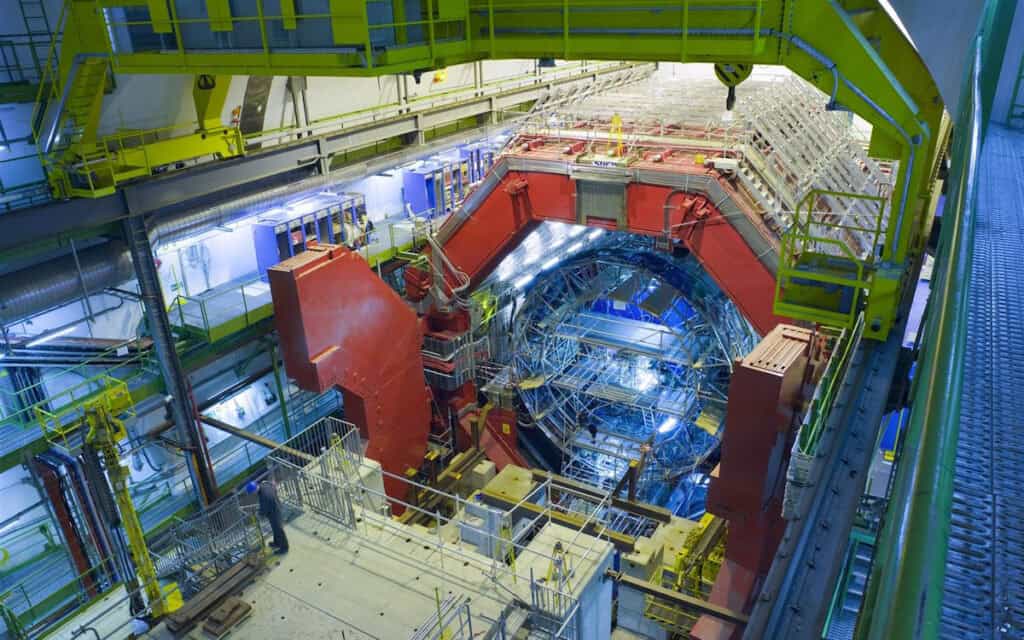University of Kansas Researchers Help Detect Transmutation of Lead into Gold at Large Hadron Collider


Understanding the Role of Nuclear Physics at the University of Kansas in Cutting-Edge Particle Experiments
Recent advancements in nuclear physics have pushed the boundaries of scientific exploration, leading to groundbreaking discoveries that deepen our understanding of atomic interactions. The University of Kansas (KU) has been instrumental in these developments, particularly through its involvement with experiments at the Large Hadron Collider (LHC). Among the most remarkable achievements is the detection of gold creation from lead nuclei during ultra-peripheral collisions, showcasing the university’s vital role in high-energy physics research.
If you’re interested in nuclear physics, particle physics, or the innovative research conducted at top-tier institutions like KU, this article offers insight into how university-based scientists contribute to some of the most fascinating discoveries in modern science. Explore the techniques that have enabled precise measurement at colossal facilities and discover what these findings mean for the future of physics and materials science.
Advancing Nuclear Physics: KU’s Contributions to LHC Experiments
The Large Hadron Collider, operated by CERN near Geneva, Switzerland, is the world’s most powerful particle accelerator. Its purpose is to investigate fundamental particles and forces that constitute the universe. The University of Kansas has been actively involved in the ALICE experiment at the LHC, utilizing their specialized expertise to analyze rare collision events. This collaboration has led to notable breakthroughs, including the first detection of gold formation during proton-ion collisions—a process previously thought impossible outside of stellar environments.
The KU team developed innovative techniques to study ultra-peripheral collisions (UPC), where ions pass close to each other without physically colliding. Instead of the typical violent collisions producing debris, these near-misses generate photons that can interact to produce new elements. This subtle process offers unique insights into nuclear interactions, and KU scientists have refined the methods to observe and measure these phenomena with extreme precision.
How KU’s Nuclear Physicists Improved Experimental Techniques
The key to this achievement was KU’s pioneering approach to detecting these clean, photon-photon interactions in the dense environment of the LHC detector. These methods involved tracking photons emitted by highly charged ions moving at near-light speeds, allowing researchers to observe rare transmutation events. By capturing these fleeting moments, KU scientists observed the conversion of lead nuclei into gold, albeit for a fraction of a second.
These cutting-edge techniques are not only essential for confirming theoretical predictions but also for advancing nuclear physics. They enable researchers to understand the processes behind element formation and nuclear reactions, which are fundamental to astrophysics, nuclear energy, and materials science.
The Significance of Gold Transmutation and Future Implications
The transmutation of lead into gold at the LHC is a historic step—though it occurs briefly, the process demonstrates the potential for nuclear reactions to change elements in controlled environments. This realization has wide-ranging implications, from fundamental physics to practical applications in medicine, industry, and energy sectors. Notably, understanding such transmutation could inspire new methods of material synthesis or even innovations in nuclear waste management.
Additionally, these findings deepen our grasp of nuclear behavior under extreme conditions, providing critical data for designing future particle accelerators and colliders. As research continues, KU’s contributions could guide the development of new technologies for element production or the synthesis of superheavy elements that might have useful properties yet to be discovered.
Why University Research Matters in High-Energy Physics
Academic institutions like the University of Kansas play a crucial role in fundamental research, often bridging the gap between theoretical physics and experimental validation. Their involvement in large-scale projects such as the LHC provides access to sophisticated equipment, specialized expertise, and innovative methodologies. KU’s active participation exemplifies how universities can contribute meaningfully to international scientific collaborations—paving the way for discoveries that can redefine our understanding of matter and the universe.
The Future of Nuclear Transmutation Research
The recent detection of gold creation at the LHC exemplifies how innovative techniques and dedicated research at academic institutions like the University of Kansas are driving forward our understanding of nuclear physics. With continued experimentation and technological advancements, the field is poised to unlock even more secrets of matter, perhaps leading to practical ways to harness nuclear transmutation for technological and scientific applications.
Ready to begin your journey to study at the University of Kansas in the USA? Connect with a Studygram expert counselor today! Our team will help you choose the right program, understand the application requirements, and guide you through every step until you receive your university acceptance.

